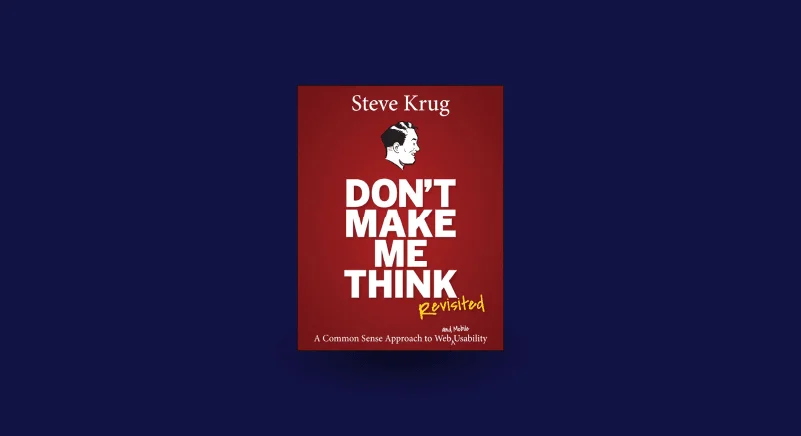Product development through UX Design lenses should always consider User-Centered Design concepts and establish user personas to guide the process of decision-making throughout a project.
So let’s deepen your knowledge about personas and help with some practical guidelines so you can create effective personas for your upcoming projects. So roll up your sleeves, and let’s get to it!
What are user personas and why are they important?
Personas are archetypical users that represent a larger group. They are “the face” of your product’s customers, and there’s a lot of research and data involved in the creation process.
Defining personas is relevant to UX Design because it allows you to empathize with who will be using your product, placing you in your customer’s shoes so you can better comprehend them.
That is why great products are built when the whole team is focused on the customer, the actual customer: your user persona. This way, designers can develop solutions to specific problems, placing the user in the center of all product decision-making.
Therefore, creating a profile of your target audience is crucial to continuously improve your product or service according to your customer needs.
Personas and their characteristics

It’s also important to know about your product domain and its context to build a consistent Persona that will reflect real users.
Understanding what characteristics are paramount to developing Personas will do just that. So your UX research should respect the following characteristics:
- Personas should reflect real users based on research and analyses, so they should never take into consideration opinions or assumptions: beware of biases;
- Personas should focus on the interaction with the current product, not how this interaction will be in the future;
- Personas are true to their context; they focus on behaviors and goals related to a product’s specific environment.
A step by step plan
The idea behind personas might be simple, but developing profiles that will be useful can be a little more complex than it seems.
To start, establish a framework that you and your team can use.
These are seven steps you can adopt:
- Define persona’s scope;
- Define persona’s type;
- Create, conduct and analyze research;
- Define a demographic profile;
- Define persona’s objectives;
- Add context;
- Share with the people in your team.
1) Define persona’s scope

Depending on what you’re aiming for, the organization can have personas with:
- Broad scope: If you want a set of personas to represent the entire company and influence multiple business areas with several products.
- Narrow scope: If you want a specific set of personas that will influence only one line of business, like guiding the redesign of one particular feature of a product.
Before creating user archetypes, it’s necessary to be aligned with the purposes and goals behind a persona.
Ask yourself: What is the purpose of this persona?
Once you have the answer, you can determine the appropriate scope for your persona. Don’t forget about the pros and cons of choosing one over the other. Choosing the right tool for your team will determine your personas’ success.
Broad scope
Yes, it may be easier to create a set of personas representing all of your customers and then replicate the same profiles for different projects.
But a broader scope means shallower data. And the more superficial the data, the less accurate personas will be because they won’t cover specific user details or context.
Some of the characteristics of broad-scope personas:
- Include high-level data;
- Data that supports high-level decisions;
- Not helpful in targeting design decisions;
Narrow scope
On the other hand, a narrow scope means richer data; there’s less context to consider because a set of personas won’t be responding to several products or various circumstances. Here, scenarios are unique, and persona attributes will be directly related to one specific product or feature.
This approach lets you build assertive personas since you can peel off more layers of user personalities and behavior, which will bring more insights for high-level strategic decision-making.
A targeted persona scope will tell you all about users’ behavior, attitudes, goals, and motivations.
Characteristics of narrow-scope personas:
- Include detailed data;
- Data that supports targeted design decisions;
- Not useful for making high-level decisions that impact more areas or various contexts.
2) Define persona’s type

After choosing the appropriate scope and how much data will be necessary, it’s time to define what type of persona fits your project needs better.
There are different ways to carry out your research, and how you gather data will define your persona type:
- Proto-personas
- Qualitative personas
- Statistical personas
Proto-Personas
This method is best suited for teams with a Lean framework or with low UX maturity.
Since proto-personas are not based on research, we don’t encourage them unless you want to align your team’s assumptions about users. In this sense, proto-personas can be helpful for further investigations, validating or not these hypotheses.
Even if there’s no research involved, proto-personas can rely on past research and existing user data. It’s also possible to collect information from stakeholders or clients.
How-to
To develop this type of persona, each participant creates at least two proto personas and then shares them with the group. Later, the group discusses all the personas and combines, remixes, and edits various attributes into a final set containing at least three proto personas.
Qualitative personas
These are the favorite type for most companies as they rely on qualitative research with real users. They don’t take too much effort or time — especially in comparison to the high value they bring — and UX teams can collect the necessary data alongside other activities.
They are precise about users and provide key insights.
How-to
For this approach, start with a sample of at least five users. You can have different groups of 5 participants each and then compare the results. These interviews can be separate sessions, usability tests, or field studies.
The research should be able to uncover user pain points, their expectations for the features, and the product itself. Also, observe if they can easily complete a task or solve a problem, how they handle interactions, and the words they use for describing the experience afterward.
Take your notes and transcripts to categorize the data: segment users based on shared attitudes, goals, pain points, and expectations. Look for patterns. The similarities might be more important than where they differ, and you can start building your persona with these associations.
Statistical personas
This type of persona is the most complex and combines qualitative and quantitative research.
Statistical personas are suitable for teams with significant resources as they need more time, effort, and statistical expertise. In addition, they tend to be more accurate because the exceptions won’t prevail with a large sample.
How-to
For this approach, you’ll need to conduct exploratory qualitative research to build relevant questions that will go on your survey. Don’t start by sending out surveys if your team doesn’t fully understand what your customers want — their specific needs, motivations, and pains.
To create a rich survey that will be useful and insightful, you need to analyze and identify the major topics that arise from your qualitative research. Start by surveying at least 100 users (the more, the better), then use a statistical clustering technique to find the patterns in your survey data and cluster the users into similar groups.
We’ll summarize the steps below for a better understanding:
- Exploratory qualitative research;
- Analyze results and create questions;
- Send surveys;
- Statistical clustering technique.
3) Create, conduct and analyze research

A key point about developing personas is that it reflects real users.
So let’s start by wisely developing the questions for your research:
Define your research questions
The first step to conducting research is to develop questions that will provide insightful answers.
Therefore, it’s essential to gather data that inserts the user into a context. So think about questions that will clarify:
- Who’s your user?
- What are their objectives (what are they expecting), their needs (they might not be aware, so ask wisely), and pains? (what are they trying to solve?);
- What’s keeping them from conquering their objectives? (What are their struggles)
Conduct research or interviews
This step can be done in many ways:
- establishing a questionnaire directly on your website or app;
- sending a survey to users by email;
- interviewing candidates in person.
To know more on how to prepare and conduct user interviews, check our specific article about this:
Analyze research data
Now, it’s time to analyze the responses.
This step is quite complex because the data you’ll be analyzing is qualitative, so it can take longer to organize all information.
Review transcripts and any other evidence to find patterns and identify candidate behavioral variables.
Golden tip: use Mind Maps to identify similar or related answers.
The goal here is to group similar people into types of users. Then, for each group, rank each person against a number of characteristics of behaviors and attitudes, determining which participants have similar characteristic rankings, to discover common traits among them. These grouping trends will serve as the basis of a persona.
Remember: Compare participants with the same role.
A role could be their job or their part when interacting with a product — such as a customer or a professional.
4) Define a demographic profile

Most likely, your organization already has data on demographics, select information significant to usability with your product. If such data are not available, you can send surveys to current users to obtain more information.
In general, demographics involve:
- Personal and professional background: include age, gender, education, marital status, number of children if any, occupation;
- Their environment: the physical and social structures they belong, this kind of information help to understand users’ relationship between their environment and technology;
- Behavioral: include users’ attitudes, motivations, interests, and needs.
Don’t waste time on information that won’t be relevant for your project.
If you are making an app that helps people lose weight, it would be relevant to know their age, gender, and habits. Whereas, if you’re building a mental health software, other information like level of education, marital status, and occupation are more important.
Demographics are essential to give context to user needs and goals.
5) Define personas’ objectives
By now, you have enough information to define your persona’s primary goals.
What do they want to accomplish, and how can your product (software, app, portal) help them do that?
The objectives can include finding restaurants on a budget and supporting investment decisions.
During this stage, it’s essential to understand your persona’s obstacles to anticipate how your product can help them.
6) Add context
The context describes the way your persona interacts with your product.
The idea here is to set a scenario that enables showing how, when, and where these interactions unfold.
The most important thing here is that the narrative should come from a user’s point of view — not from a third party. This way, you can put yourself in your persona’s shoes and understand their interactions, empathizing with their journey.
7) Share with your team

After personas are created, share the final version with key stakeholders and the rest of the team.
Make presentations of the results with all the arguments that support your personas.
This step is crucial to effectively improve decision-making about current and future projects on product development.
Additional tips

- Start small!
A complete study on personas requires extensive and complex research. And sometimes, there are just not enough resources to develop the ideal research.
However, don’t give up just yet.
Start your research on a smaller scale and gradually increase the development until you have a solid persona.
Even if it takes longer, do not compromise quality over time. It’s essential to carry out surveys and interviews efficiently to guarantee you have reliable data.
- Demographics alone are not enough to build a persona.
Don’t mistake demographics with personas.
Personas are user profiles with well-defined characteristics and goals that go beyond age, gender, and profession.
- Don’t create assumptions.
Don’t create a persona based on personal opinions or assumptions. This kind of attitude will only compromise your vision about the user, and it can undermine decisions about a product.
Therefore, invest in real, substantial research. Collect users’ information and be ready to change directions. We are not always right about users, and our assumptions might be wrong. Personas can only emerge from data.
Why are personas not working?

Just as with any other tool or process, personas can be challenging. Even a struggle.
If results towards personas are not meeting expectations, it can be a flag that something is not working as it should. When that happens, take a moment to revisit the entire process and learn what could have gone wrong.
We listed the main reasons why personas might not be working for your company.
Number one: Personas were created, but no one uses them
Sometimes, a team goes through a lot of work and effort to develop personas, but nothing happens. They just sit there, on an empty void because no one uses them.
It can be pretty frustrating to see that the company didn’t harvest the fruits of your labor. So make sure:
- Educate people beyond your team about personas, and present the created personas to the whole company.
- Advocate. Share successful examples about personas. It’s common to see people who had a bad experience generalize that, so personas might lose credibility if that’s the case. These people might not “buy” the concept of personas and, therefore, won’t share it with their teams.
- Show how to use it. Other departments or even new employees might not know about personas or how to use them. Build awareness of the benefits they bring.
Number two: Only demographics data were used
As mentioned before, the development of personas should count on demographics but not entirely on them.
It’s imperative to know the motivations and needs behind the user instead of just putting a picture, a name, and concluding that the study on personas is done.
Also, demographics will only be helpful if they add context and insight to understand customer behavior. So be sure to filter this type of data.
If personas are not showing meaningful impact, reassess their expectations and pains; check if they truly reflect reality or if your personas were built only with demographics that are not relevant.
Number three: Personas were developed from opinions
We might believe that we know our users well, but it’s only speculations if data do not confirm hypotheses.
So if this is the case why personas are not working for you, don’t walk away from research and data that confirms your users’ profile.
Number four: Personas lack goals or context
The mistake can feel right in the beginning.
If a persona doesn’t have a clear goal or need that your product must accomplish, they become worthless.
Moreover, not knowing their context or environment leave too many gaps in their behavior and desires.
Therefore, describe clear goals for your personas, and don’t forget to role-play daily situations to study how they behave and what they truly want or need.
Developing personas is crucial to the process of product development or improvements. We hope this article can help you to create personas more accurately, avoiding mistakes along the way.








